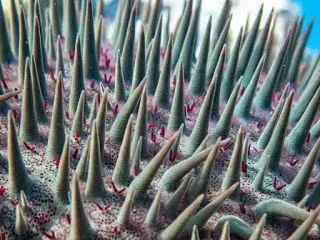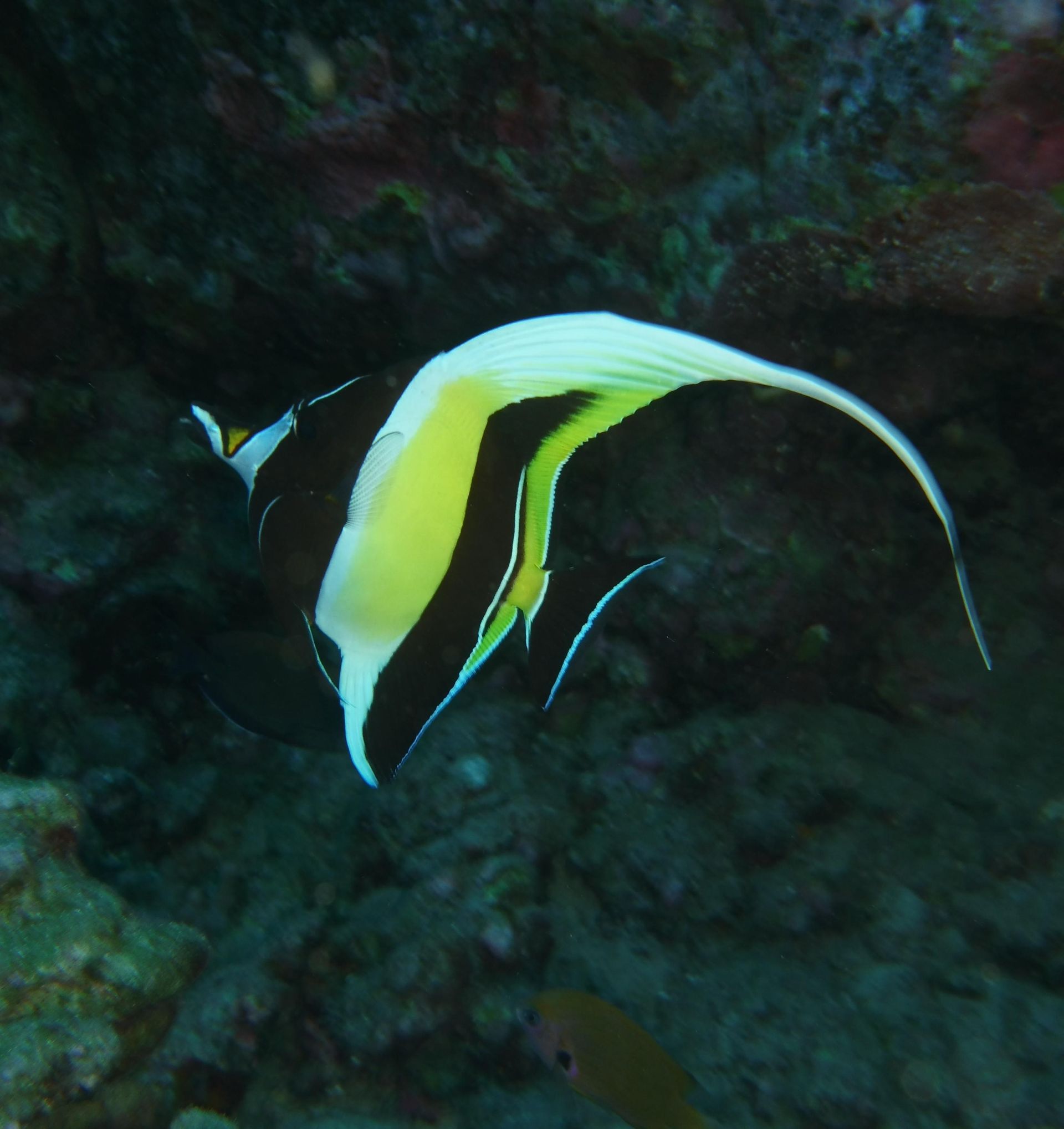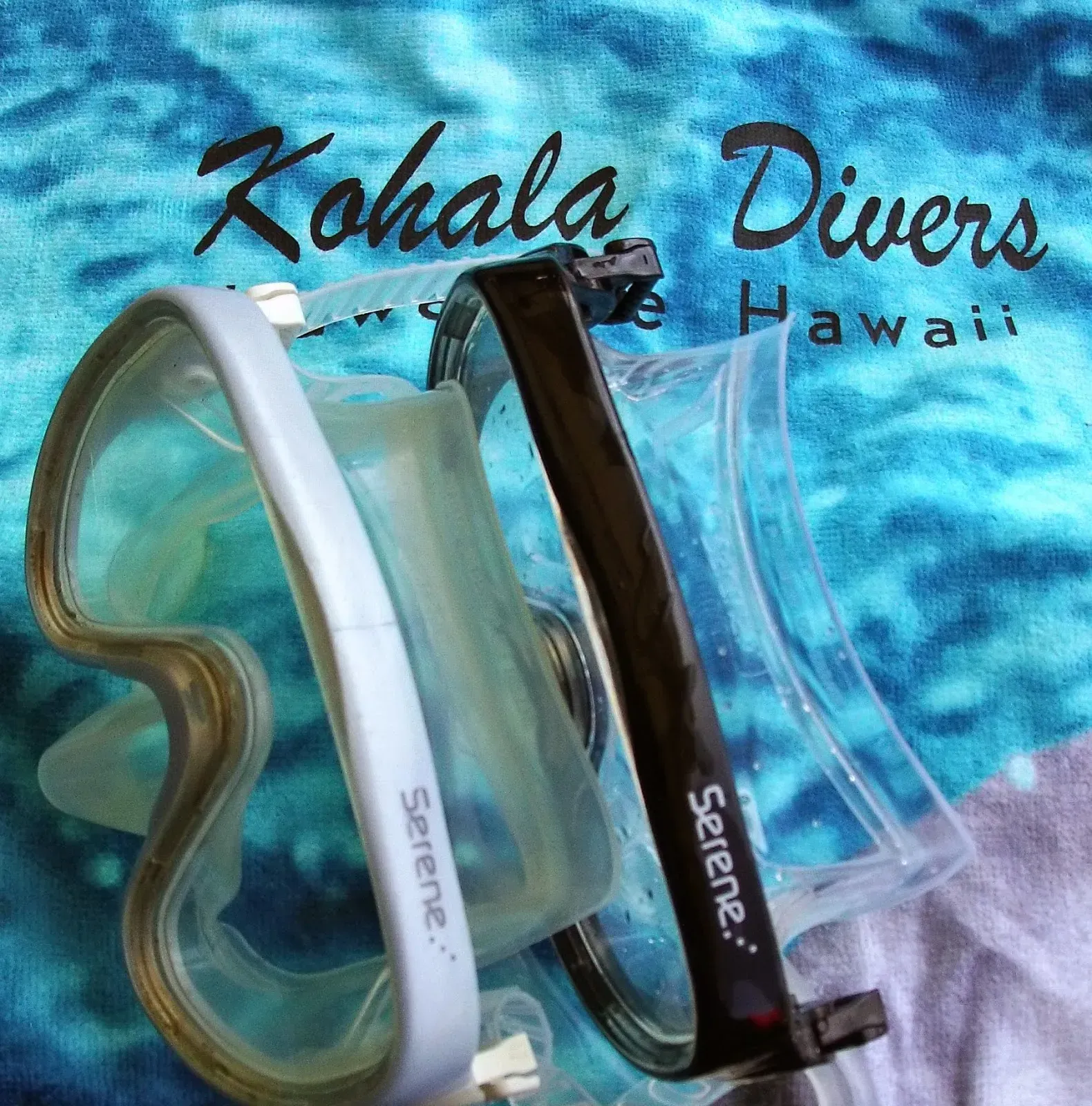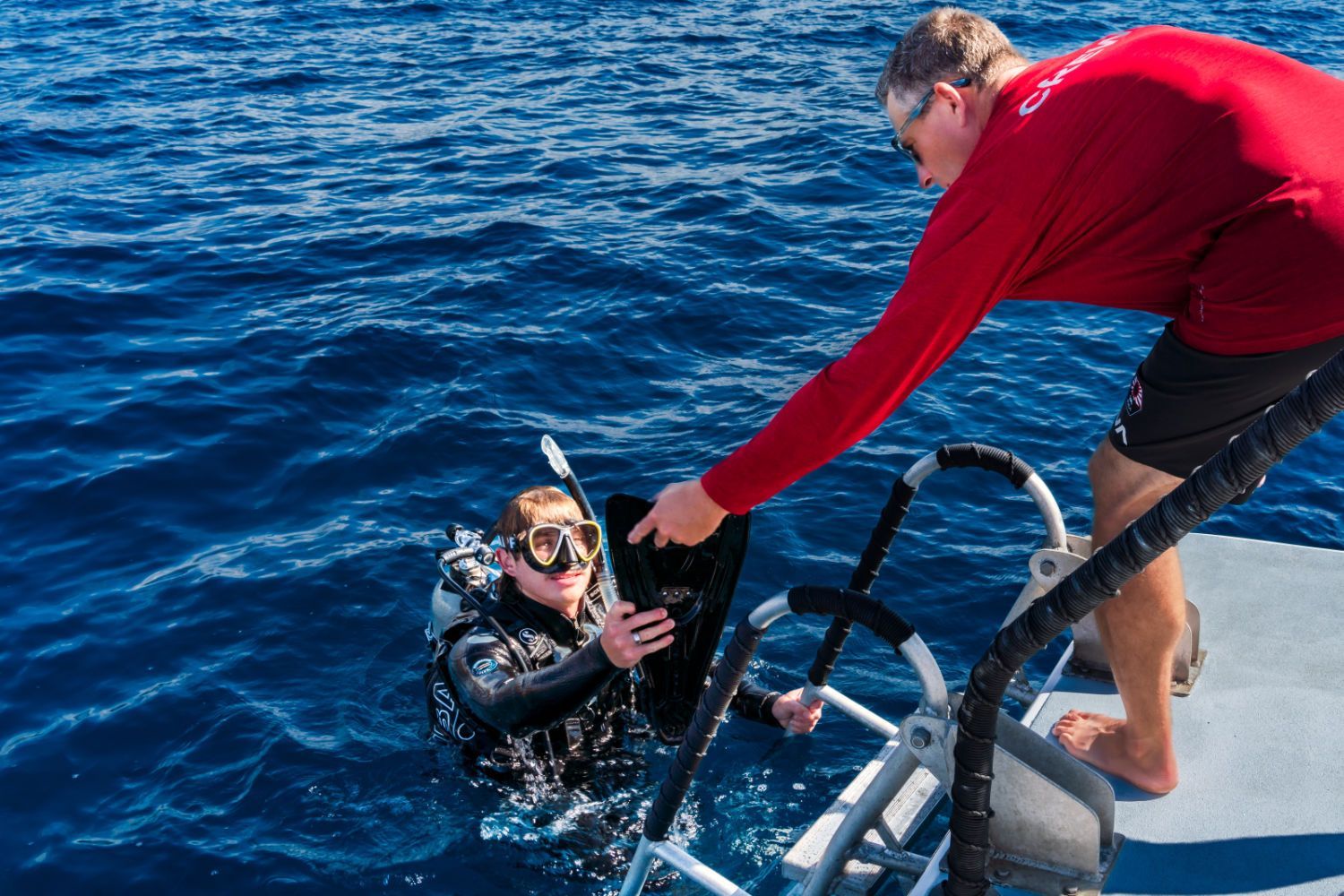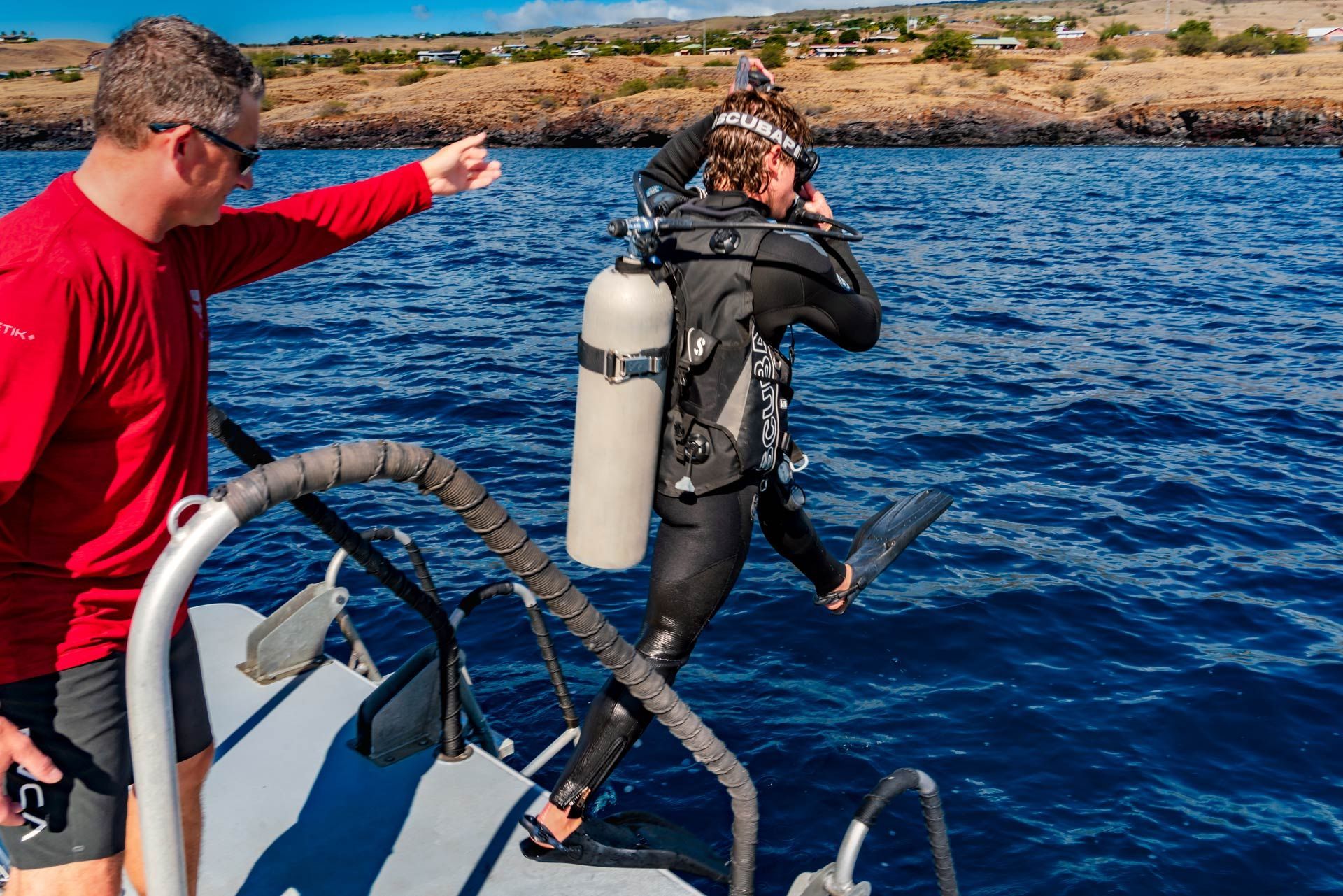LEARN ABOUT THE CROWN-OF-THORNS STAR
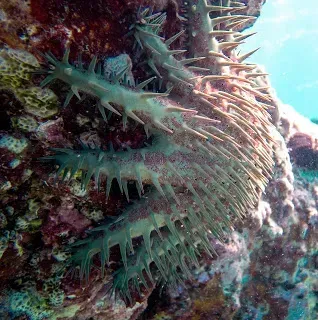
The crown of thorn Starfish are found on nearly every site we visit on the Kohala Coast. Divers often ask us after a dive “What was that cactus looking thing” or “was that a weed on the coral?” Read on for some info on these interesting invertebrates.

While enjoying the reefs of Hawaii and all their marine life, spare a thought for the corals on today’s menu!
The diner is Acanthaster planci , Crown-of-Thorns star (COTS) and his favorite meal is coral polyps, especially those of Pocillopora meandrina (Cauliflower coral).
The body is disc-shaped, up to 18” across, with as many as 21 arms, it’s usually red/green in color and the whole thing is covered in venomous spines. Don’t get too close…many divers will tell you of their discomfort having inadvertently got too friendly with this star (burning pain, numbness and possible discoloration of the area for a couple of days)!
While enjoying the reefs of Hawaii and all their marine life, spare a thought for the corals on today’s menu!
The diner is Acanthaster planci , Crown-of-Thorns star (COTS) and his favorite meal is coral polyps, especially those of Pocillopora meandrina (Cauliflower coral).
The body is disc-shaped, up to 18” across, with as many as 21 arms, it’s usually red/green in color and the whole thing is covered in venomous spines. Don’t get too close…many divers will tell you of their discomfort having inadvertently got too friendly with this star (burning pain, numbness and possible discoloration of the area for a couple of days)!
They are impressive creatures, using all of those arms to climb atop coral colonies where they then extrude their stomachs and secrete enzymes to liquify & digest individual coral polyps. Just the white coral skeletons remain, when they absorb the available nutrients and move on. True horror movie stuff!
While these stars have wreaked havoc on some reefs around the world (including the Great Barrier reef), here in Hawaii we don’t appear to have a big issue with them yet, and usually, one won’t see more than a few at any one site. In places where they have become a real issue, divers can physically remove the creatures or inject them with household vinegar to kill them… although either option is time-consuming & costly.
There are some in Hawaii who believe that this predator may in fact be doing some good for the reef, feeding on some good for the reef, feeding on some of the faster-growing corals (such as Cauliflower & Rice corals) and increasing coral diversity on Hawaiian reefs.
In Hawaii, their main natural predator is the Triton’s Trumpet snail; also Harlequin Shrimp, Stripebelly Pufferfish and Lined Fireworms will feast on this star.
We hope you will get a chance to observe this impressive star, when diving with us at Kohala Divers in Hawaii!






